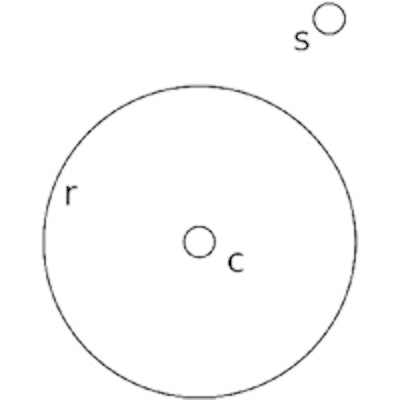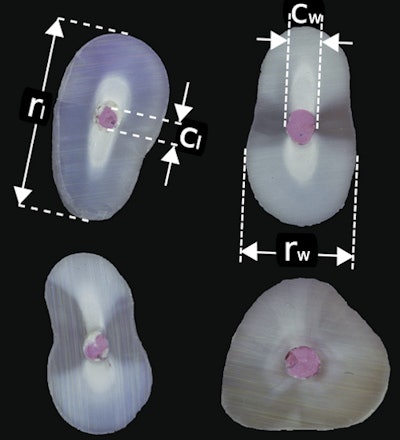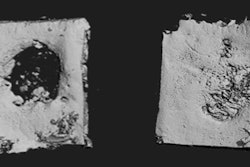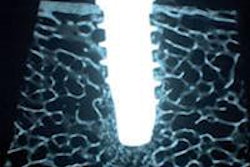
Dentists drill bigger holes in teeth than necessary for restorations because of an optical illusion that makes circular objects look smaller than they really are, according to a new study in PLOS One (October 23, 2013).
 Above is a version of the Delboeuf illusion. Circles c and s are the same size, but c appears smaller when surrounded by a larger circle, r. If one adjusts the size of c to appear the same as that of s, one makes it larger than it should be. All images reprinted from O'Shea RP, Chandler NP, Roy R. Dentists make larger holes in teeth than they need to if the teeth present a visual illusion of size. PLOS One. October 23, 2013.
Above is a version of the Delboeuf illusion. Circles c and s are the same size, but c appears smaller when surrounded by a larger circle, r. If one adjusts the size of c to appear the same as that of s, one makes it larger than it should be. All images reprinted from O'Shea RP, Chandler NP, Roy R. Dentists make larger holes in teeth than they need to if the teeth present a visual illusion of size. PLOS One. October 23, 2013.The optical illusion is called the Delboeuf illusion, in which two circles of identical size are placed near each other, and one is surrounded by another larger circle. If they are close to each other, the contained circle appears smaller than the noncontained circle.
The study focused on the way that endodontists perform root canals. When they drill into the root, the endodontist is effectively adjusting the size of a tiny circle contained within the larger circle of the outside of the tooth. Because of the optical illusion, the hole being drilled in the root may look smaller than it really is, meaning they may make a larger cavity than necessary.
To test the theory, researchers prepared at least 21 teeth for each of eight specialist dentists, including different-sized teeth with different-sized canals. The researchers theorized that if the Delboeuf illusion affected treatment, the size of the holes drilled into roots would be bigger if the root hole was smaller relative to the circumference of the tooth when viewed from above.
The endodontists were given 21 teeth each placed into resin, which acted as the gum. They were told to prepare a cavity in the root end of each tooth ready to receive the filling and were told to be as conservative as they could with the size of the hole. The dentists used the usual mirrors and magnification.
When finished, the researchers filled the root ends with a pink material to highlight the size of the hole. They also measured the length and breadth of the tooth cavity being treated relative to that hole.
 Cut faces of four root ends prior to the endodontists’ operating on them (root tips removed and pink gutta percha visible), showing some of the taken measurements. The upper left tooth shows the length of the long axis of the root acoss the root face (rl) and the length of the canal on the same axis (cl). The upper right tooth shows the width of the short axis of the root acoss the root face (rw) and the width of the canal on the same axis (cw). All the measurements were repeated after the teeth had been operated on by the endodontists, except that the central lengths and widths across the root face were of the cavities.
Cut faces of four root ends prior to the endodontists’ operating on them (root tips removed and pink gutta percha visible), showing some of the taken measurements. The upper left tooth shows the length of the long axis of the root acoss the root face (rl) and the length of the canal on the same axis (cl). The upper right tooth shows the width of the short axis of the root acoss the root face (rw) and the width of the canal on the same axis (cw). All the measurements were repeated after the teeth had been operated on by the endodontists, except that the central lengths and widths across the root face were of the cavities.The researchers found that endodontists increased the size of canals by about 0.59 mm when the size of the tooth canal (the enclosing circle) was average, and by about 0.97 mm (1.65 times bigger) when the tooth canal was bigger than average.
To prevent this, dentists should be aware of the potential for optical illusions that affect treatment and use measurements because they aren't subject to visual illusions.



















